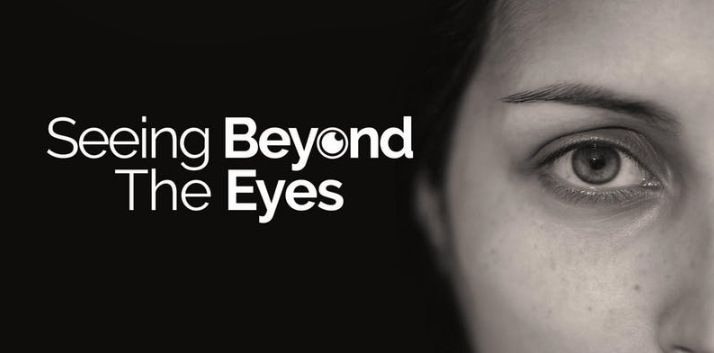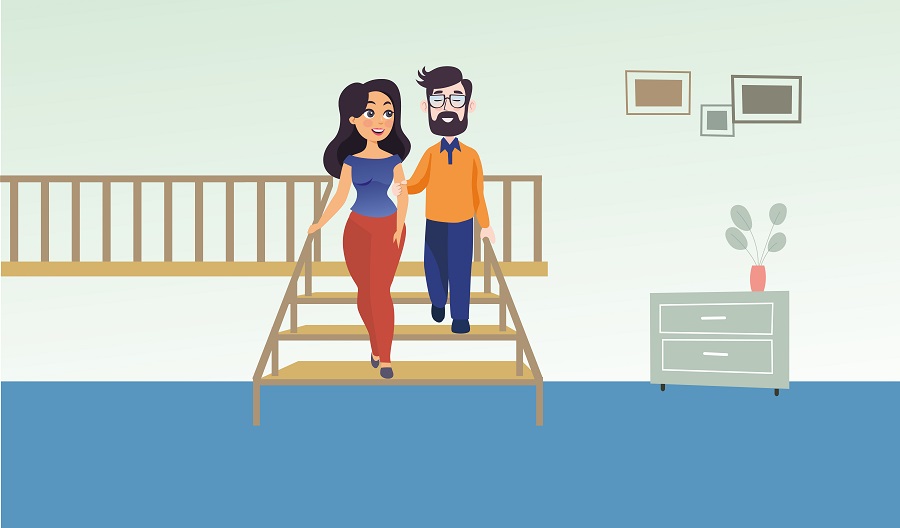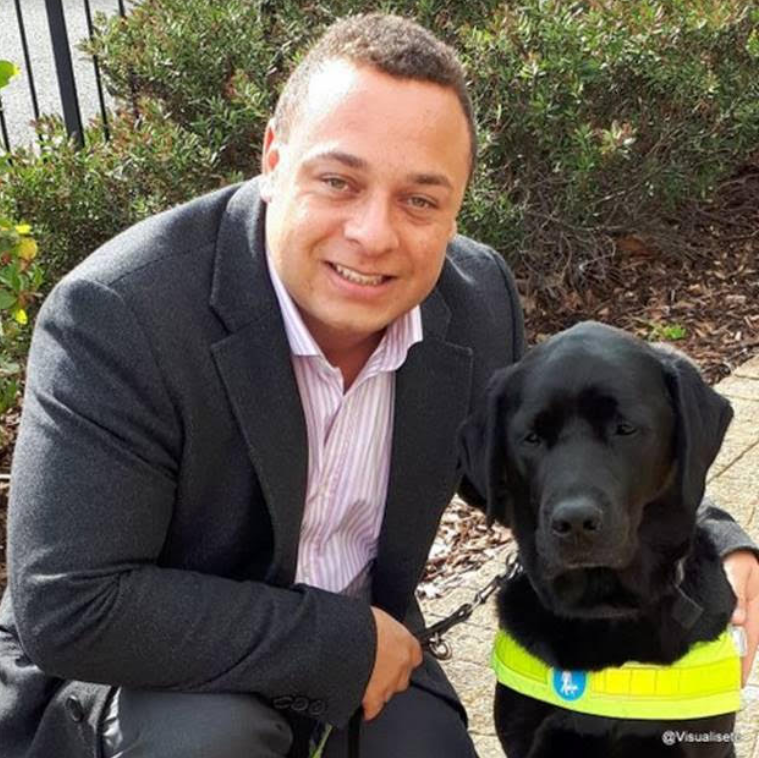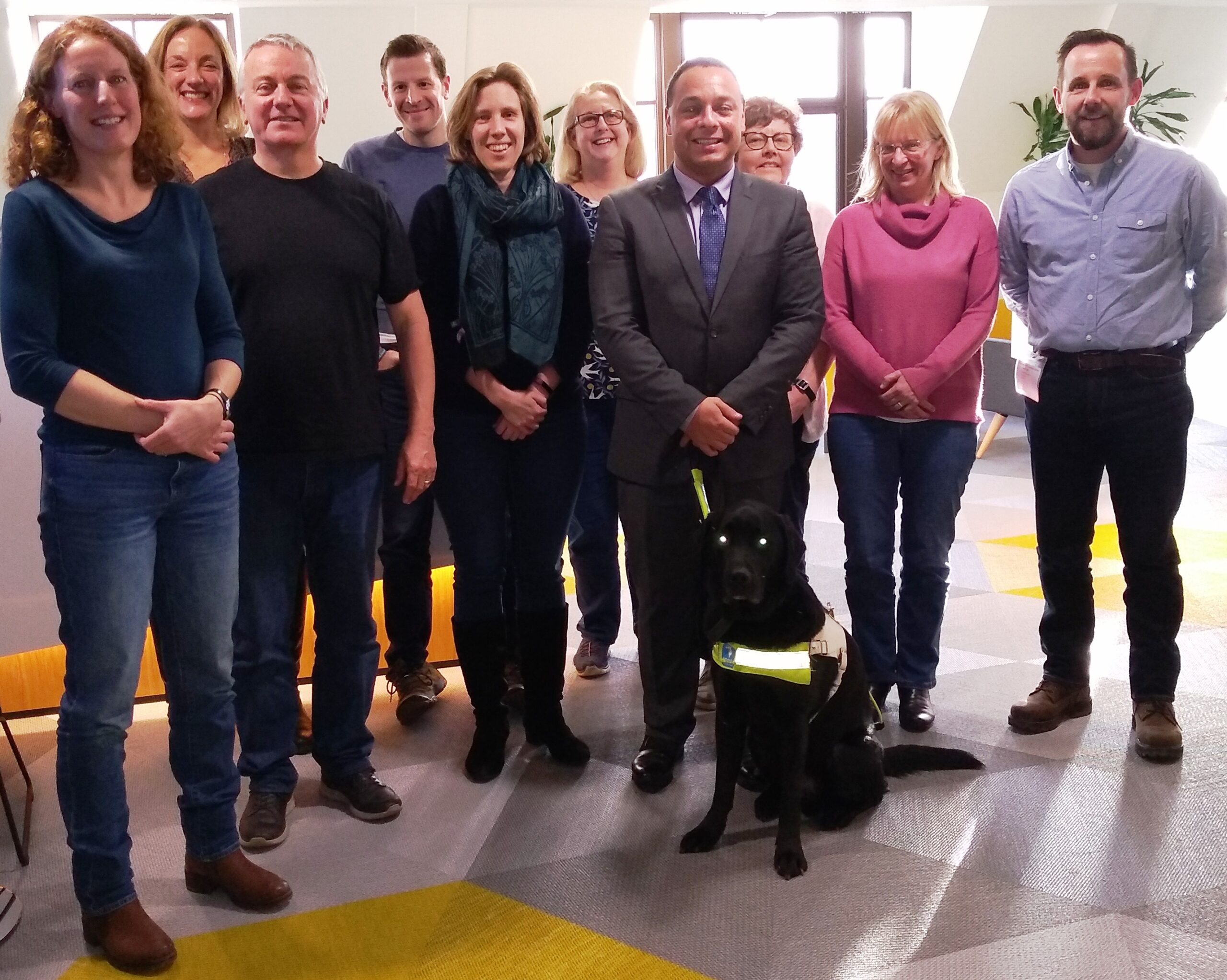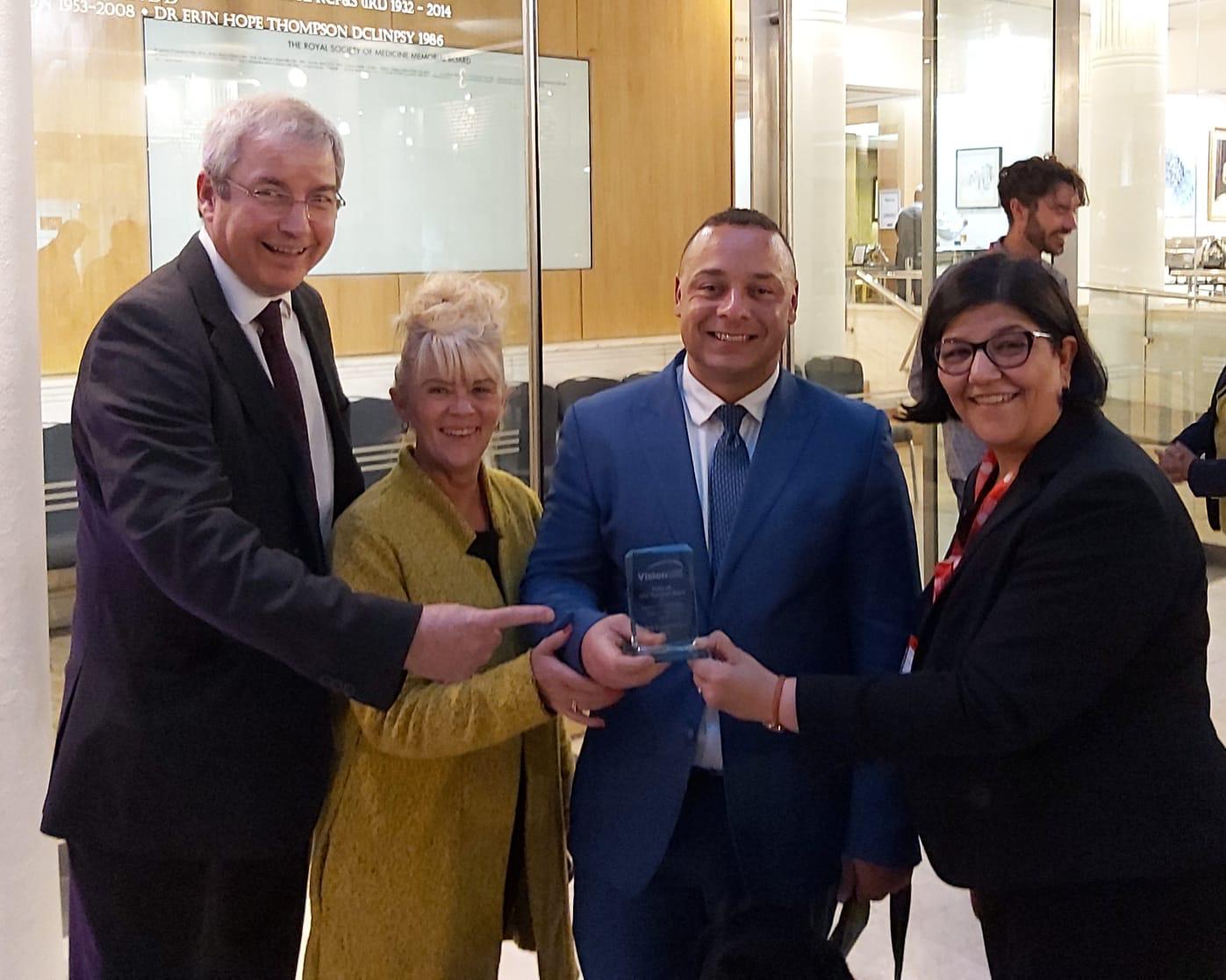GUEST POST: Founder of Visualise Training and Consultancy and Seeing Beyond the Eyes CET roadshow lead, Daniel Williams has retinitis pigmentosa. In this article, he asks if it is time for a change when it comes to Certification of Vision Impairment (CVI).
Whilst recognition that you have low vision is an advantage, when it becomes a label on a numbered scale, the effectiveness of the certification process is questionable. The other troubling issue is how unfair the system can be by denying patients with VI many crucial benefits and concessions.
To see or not to see…
Certification by an ophthalmologist
gives you formal recognition of being vision impaired and opens the door to referrals
for social care assessment and many other concessions including financial
assistance. You will be registered as sight impaired (partially sighted) or
severely sight impaired (blind).
At present, to get the coveted award, known
as The Certificate of Vision Impairment (CVI) you need to stumble into one of the
following categories:
Sight
impaired (partially sighted)
Your sight
must fall into one of the following categories, while wearing any glasses or
contact lenses that you may need:
- Visual
acuity of 3 / 60 to 6 / 60 with a full field of vision.
- Visual
acuity of up to 6 / 24 with a moderate reduction of field of vision or with a
central part of vision that is cloudy or blurry.
- Visual
acuity of 6 / 18 or even better if a large part of your field of vision, for
example a whole half of your vision, is missing or a lot of your peripheral
vision is missing.
Severely sight impaired (blind)
Your sight must fall into one of the following
categories, while wearing any glasses or contact lenses that you may need:
- Visual acuity of less than 3 / 60 with a full visual field.
- Visual acuity between 3 / 60 and 6 / 60 with a severe reduction of
field of vision, such as tunnel vision.
- Visual acuity of 6 / 60 or above but with a very reduced field of
vision, especially if a lot of sight is missing in the lower part of the
field.
…that is the question
This is where things can become tricky
for certain eye conditions – you may find yourself stumbling into things on a
daily basis, but, unfortunately, not falling into the above categories which still
causes immense problems and visual difficulty for the patient.
The criteria, based on the keenness of your
central vision – or acuity -judgesthe level of detail you can see, for which
you will be asked to read down the eye chart. It also concentrates on your
field of vision, which is determined by how much you can see around the edges
of your central vision, whilst you look straight ahead.After assessment of the results,
your eligibility is decided – win or lose.
Some patients really struggle to see,
which adversely impacts their lives yet they will not meet the criteria.
Let’s be clear
A good
illustration of this is a patient who has nystagmus. In addition to
uncontrolled and repetitive rapid eye movement, they may struggle with
sensitivity to various light conditions but have overall good acuity yet still
fail to meet the criteria.
Another example of this may be a patient who has early onset retinitis pigmentosa with very good visual acuity and field. They will struggle emotionally with a diagnosis of a degenerative condition, they may struggle in the dark, to cook, clean and get out and about. So why can’t they be certified?
Theseare
only two examples. Many people struggle with their vision, at whatever level,
but do not get the tick in the right box to receive the support, advice and
recognition they need to cope with their loss of sight.As
a result, many patients slip through the system and end up alone and vulnerable.
So,
has the time come to reorganise and update this system to embrace a more
holistic approach to measurement of sight loss, without the charts and numbers
focusing on functional vision?
In other words, if someone is struggling
to see properly, does it really matter if they meet a set of pre-determined
figures?Some eye conditions, even with a relatively high acuity of 50%, leave
patients battling to complete everyday tasks. They may also be living in fear of
becoming blind or of coping with future degeneration.
The people who are in between who can’t
drive and likely can’t read standard sized fonts even with glasses are unlikely
to receive any form of disability benefit despite being very much at a visual
disadvantage. They fall in no man’s land and are just as likely to need help,
especially if they lose their driving licence or job as a result of sight loss.
Sue Ricketts, Executive Information and
Development Manager with Nystagmus Network highlights the problem: “So many
people with nystagmus fall between two stools; they can’t see well enough to
drive, but they can’t get certification on visual acuity alone so can’t
access concessionary fares on public transport. If they don’t qualify for
Personal Independence Payments, there’s no help there for transport costs, taxi
fares etc. either.”
Boxed in
What is the advantage of fitting people
into a box? If you have a problem with your vision, you need to be referred to
resources where help, advice and support is freely available.
The challenge appears to
be how an individual can be assessed in terms of how their life is impacted by
visual problems and how best to ensure limited resources are distributed fairly
to give anyone who would benefit, access to the right technology and support.
At present the main
focus for certification seems to be Visual Acuity (too often Snellen) which is
a very limited tool – great for measuring and in the correction of refractive error but a poor indicator of
useful acuity in the real world. Driving standards recognise that using Snellen
acuity is a poor indicator of safe driving vision but they haven’t been able to
come up with an alternative.
So yes, an alternative
method for assessing functional vision is certainly needed in my opinion and
would make a wonderful PhD project for multi discipline studies. There is work going on in Wales to look at optometrists providing CVI
but the criteria are still specific and defined by law at present so a cogent
argument to alter the law would be an interesting exercise but that is a
long-term project and may or may not be successful.
We need the certification system in
place for statistics, planning services and registration to social services. Also,
certification provides the only ongoing statistics on blind and partially
sighted people in England and Wales. The CVI statistics provide the basis for
the government Public Health Indicators so losing them would lose a direct line
to pressure government to commission and provide services.
Receiving certification can be life
changing as it significantly improves lives, yet ophthalmologists admit it can
be difficult to ascertain if it is appropriate to certify a patient, especially
if they have a long-term condition. This surely illustrates the need for a more
consistent approach and to question why some patients are declined.
Rehabilitation for blind and partially
sighted people should be provided irrespective of a person’s eligible needs so
immaterial of Certification or Registration. RNIB’s description of the
Care act is useful here: https://www.rnib.org.uk/nb-online/understanding-care-act
Our Seeing Beyond the Eyes project and the work done by RNIB and others regarding
Eye Clinic Liaison Officers is a key component of this as signposting support
is more likely to provide swift support than either certification or registration.
The third sector obviously plays a key part in the support of people with sight
loss whether or not they are certified or registered
I know of many patients who meet the
criteria yet are not offered certification so does the system within ophthalmology
need to be reviewed to address this? Optometrists also have a duty when they
know their patient meets the criteria, but is not offered certification, to re-refer
them for assessment.
Patients and eye care professionals, do
you think changes are needed and if so, what and how?
To find out more or to comment on the
above, email [email protected]

